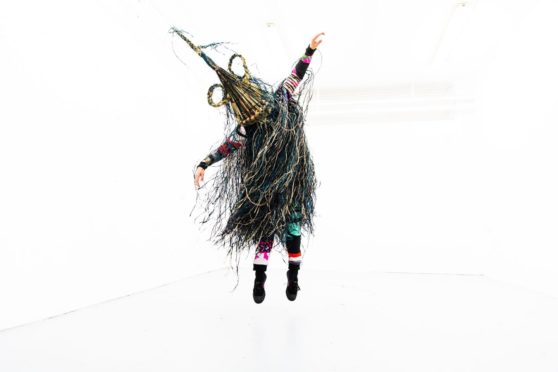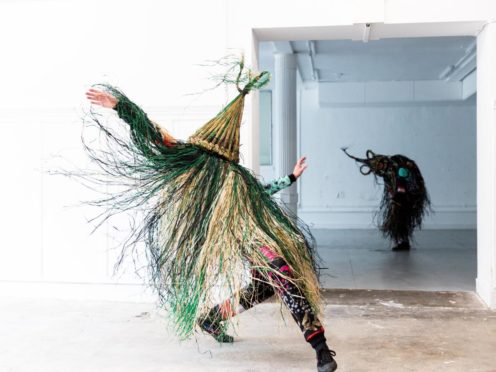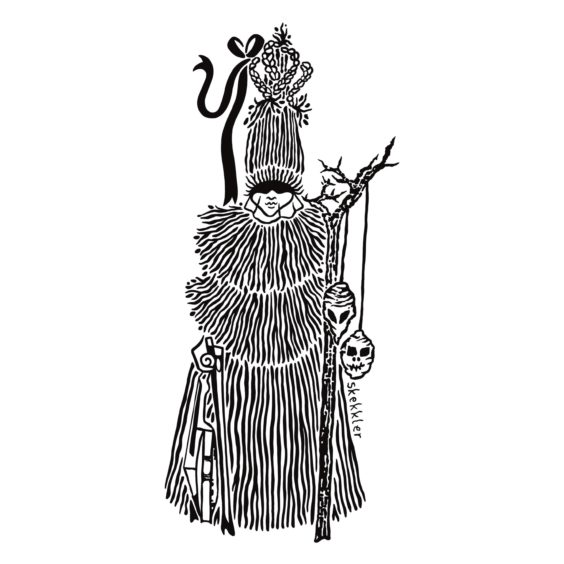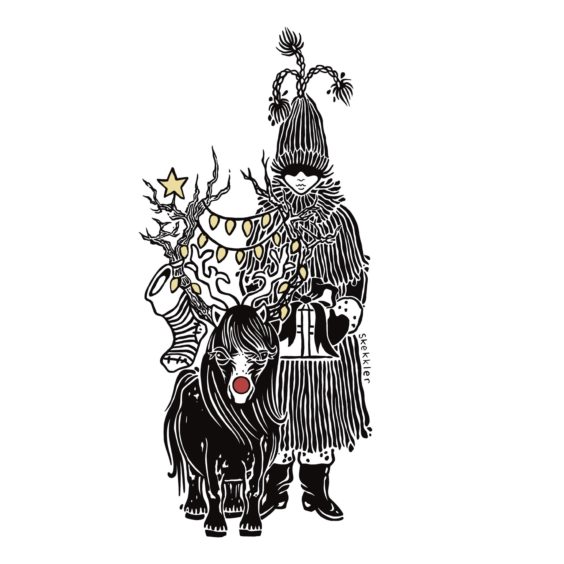If you live in the north, look out- there are skeklers about.
Skeklers?
How to know if you’re being skekled is if a bunch of figures leap out in front of you, covered in straw, and proceed to entertain you with a whirling dance and music.
These ‘straw boys’ (and girls) will be popping up in unexpected locations in Caithness, Aberdeenshire, Orkney and Shetland for the rest of this month, accompanied by Balkan-inspired beats.
The troupe is led by dance artist Rob Heaslip and ‘The Straw Boys’ is the second work in his trilogy exploring rituals of death, life and birth among the Gaels of Scotland and Ireland.
It picks up on the ancient tradition of mummers, burdie boys in the Borders, guisers, and skeklers, where groups wearing ornate straw costumes would ramble town and country entertaining onlookers.
Rob grew up in Kerry, where the tradition of ‘wren boys’ has never completely died out.
Their day was Boxing Day, or St Stephen’s Day and harks back to the legend of the wren betraying Stephen, the first Christian martyr.
Rob said: “It’s about pageantry and joy on one of the darkest days of the year.
“Being very poor, they couldn’t afford fabric to make costumes, so they used barley straw to make tall hats, with rags to decorate.
“For music they’d take something like an old biscuit tin, tie it round their necks and grad a stick from the road to beat it.”
The Straw Boys will be popping up in Caithness over the next week or so before moving on to Aberdeenshire.
The locations can be found in Rob’s social media.
He said: “After a long, miserable 18 months, I want to bring joy directly to the people, they don’t have to go to buildings and venues, it’s going to come to them in fields, beaches, harbours and make them smile.”
Skekling
Having once thrived across Scotland and Ireland, the tradition is now enjoying renewed interest, especially in Ireland and Shetland.
Skekling is strictly speaking the Shetland term for its traditional form of guising or mumming.
During the long winter months, skeklers dressed in finely-crafted straw headpieces completely disguising their faces and went house to house entertaining with skits and musical numbers in exchange for food, drink and money.
The skekling season was the first Sunday after October 14, the beginning of winter in the isles.
It continued until January 24, a date now marked by Lerwick’s Up Helly Aa fire festival.
Roots in Norse culture
The tradition has its roots in Norse culture and shares common themes in Iceland, Faroe and Norway.
To drill it down further, the word ‘skekling’ was used in the isles of Yell and Fetlar but in the isle of Unst they were referred to as ‘Grøleks’ or ‘geng en Grøleks’ which is widely believed as being derived from the Icelandic Christmas Troll ‘Grýla’ and the ‘Grýlur’ of the Faroe islands.
You denied skeklers entry at your peril- misfortune could come your way.
Some viewed their visit as a visitation from the Norse god Odin himself, so to turn a skekler away would be turning the god away.
Letting them in would be rewarded with good fortune from the land or sea from which islanders drew their living.
To disguise their identity, the skeklers spoke as they inhaled.
Now a Shetland artist known as Skekkler, adding in the extra k to differentiate, is behind a revival of the ancient tradition.
Skekkler works anonymously, so is referred to here as ‘they’.
They said: “A lot of Shetland’s history was shared knowledge through spoken word, and very few records of skekling exist to my knowledge, although there is an account by Arthur Edmonston in 1809 in his book ‘A View of the Ancient and Present State of the Zetland Islands.’
“It is my understanding that skekling was just an activity undertaken as a way of life, no one thought of its cultural or historical significance at the time.”
Nothing to do with guising
Skekkler went on to describe the skeklers’ routine, stating firmly that it has nothing to do with the Scottish tradition of guising.
“They wore oat straw suits with ornate hats, decorated with ribbons and wore a cloth to cover their face to disguise their identity.
“Shetlanders lived off the land and had little resources so I would imagine these costumes would belong to families and be passed down the line – although I have no evidence to back up, this is just a Shetlander’s comment on their Shetland history.”
If you’re among those who close the curtains and turn the lights out to avoid guisers, there was no escaping being skekled in Shetland.
“They were were led by a lead ‘skekler’ known as the ‘skudler’ who would lead a group of skeklers through the local district, visiting each and all the homes , a term known as ‘hoosamylla’.
“They would gather around the fire, usually in the middle of the home, and would perform skits, enacting supernatural beings, rapping their wooden staves on the floor – part of the custom was to never reveal your identity.
Supernatural presence
“When speaking skeklers would always speak on inhaled breath – all these non-human characteristics elevated their supernatural presence.
“Some skeklers would have musical instruments with them and would entertain the household with their tunes and folly.
“A visit from the skeklers was seen as a good omen; a blessing – and they would be welcomed into the home and kindly received, performing skits and musical numbers in return for: ‘a coarn o meal, a penny o money ir a piece o flesh’ (oat, money or meat) which would be deposited in the sheepskin bag ‘buggi’ passed around the room.
“It is believed that children between the age of 8 and 15 would most likely take part in the tradition.
“It was also common practice for the skeklers to make an appearance at a local wedding – however this may have been an adaptation from the original practice.”
Skekkler has discovered an account of skeklers in Gossabrough on Yell:
“Before the war they would use straw for the whole suit but of course during and after the war we needed the straw to feed – Mam and Dad wouldn’t have been too happy if you made off with food as costume so instead we only had straw hats. We would set off house to house and one of us would sneak off and head to the local hall, get the kettle on and then the whole village would gather there with the skeklers and make a night of it.”
The anonymous Skekkler created their practice during lockdown, aware of the place of skekling in creating a strong community bond.
They said: “It was a means of providing a spark of curiosity, joy and cheekiness to the community.
“It’s lightsome fun to skekle and be skekled.”
Skekkler has now created a series of linocuts to celebrate the tradition.
Their plan is to gather as much information regarding the tradition and preserve it through their own practice.




